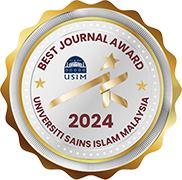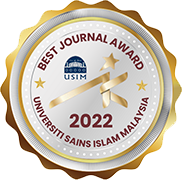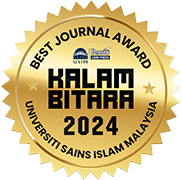شهادة الشهود وعوارضها بين الشريعة الإسلامية والقوانين المعاصرة
WITNESS TESTIMONY AND ITS IMPEDIMENTS BETWEEN ISLAMIC LAW AND CONTEMPORARY LAWS
DOI:
https://doi.org/10.33102/mjsl.v7i1.123Keywords:
Witness testimony, evidence, syariah, contemporary laws, omanAbstract
This research examines the testimony of witnesses and their respective applications under the Islamic law and contemporary laws, as the most common means of proof among the disputants. The purpose of the study is to prove the opponent's claim or defense. The research deals with the definition of the testimony, its significance, its legitimacy as a piece of evidence, and the requirements involved for its admissibility. The findings of this paper include the permissibility of the testimony of women alone, in cases such as breastfeeding and initiation of the child for inheritance, as well as the defect in a woman’s testimony and that a woman is forbidden from changing her testimony before the final judgment is passed. In addition, this research has found that testimony of a mute person is considered to be invalid according to the present Omani law, an issue needs to be addressed by the country’s legislators.
Downloads
References
Abu Saud, Ramadan. (2012). Principles of Evidence in Civil and Commercial Materials. New University House.
Al Chwani, Norzad Ahmed Yassin. (2014). Witness Protection in Criminal Law, National and International Comparative Analytical Study. National Center for Legal Publications.
Al-Homsi, Abdulrahman Ibrahim Abdulaziz. (1989). Jurisprudence and its System in the Book and Sunnah. Vol. 1. p 404.
Al-Obeidi, Nihayat Matar. (2006). The Effects of the Return of the Testimony. University of Kirkuk. Faculty of Law. Vol.1. No.1, pp. 15-22.
Al-Sarraf, Taima Mahmoud Fawzi, & Sajee Omar Shaaban Al Amro. (2009). Rafidain Journal of Rights. Vol. 11. No. 39. p.34.
Al-Shammari, Hussein Khudair. (2012). The Role of Testimony in Civil Evidence.Al Sanhosi Library.Cairo. Vol.1. pp. 28-32.
Al Suwafi, Salem bin Humaid bin Mohammed. (2009). The Testimony between Sharia and Law and the Symptoms that Plead Acceptance. Ghandour Center. Cairo. pp.123-163.
Collection of Judgments issued by the Civil Service of the Supreme Court and the principles derived from them - Appeal No. 359/2006 Higher Commerce session 27/12/2006, and appeal No. 371/2006 Higher Commerce session 10/1/2007.
Hamad, Hamid Hamad. (2015). Ruling on the Separation of Women in the Islamic Jurisprudence. Journal of Anbar University of Islamic Sciences.Vol.6. No .22.
Hejra, Mostafa. (2007) Encyclopedia of Herja in civil and criminal evidence. Dar Mahmmud for Printing & Publication. Cairo.Vol.1.
Jamil, Abed Hassan & Jandi, Khalil Yusuf. (2011). Tikrit University Journal of Legal and Political Sciences. Vol. 3. No. 11.
Maluki, Iyad. (2006). Acceptance of the Witnesses as a Judicial Claim in the Civil Suit Comparative study. Journal of Legal Sciences, House of Thought and law. Vol. 21. No.1.
Muhammad, Majeed Ali. (2012). Ruling on the Testimony of Women in Non-Financial Transactions. Journal of the Faculty of Islamic Sciences. No. 29.
Sulaiman, Tarek Faraj Saeed. (1435). Judiciary of the Witness and the Right of the Plaintiff, a study of jurisprudence. Journal of Islamic Sciences. No. 23.
Youssef, Sahar Abdel Sattar Imam (2007). Role of Judge in Evidence: Comparative Study. University Book House: Cairo.Vol.1. pp.297-306.
Downloads
Published
Issue
Section
License
Copyright (c) 2019 Abdullah Ali Al Shibili, Dr, Ahmad Zaki Saleh, Dr, Mohamad Zaharuddin Zakaria, Dr

This work is licensed under a Creative Commons Attribution-NonCommercial 4.0 International License.














































